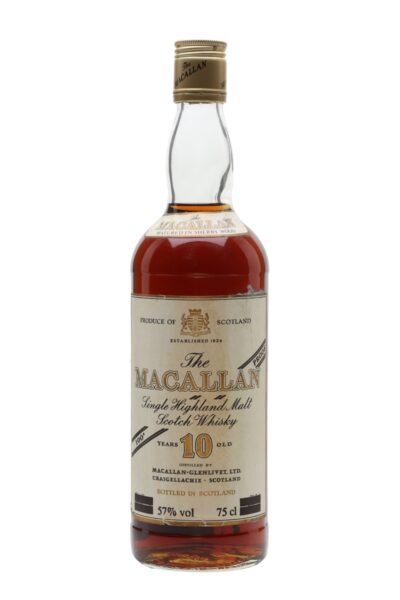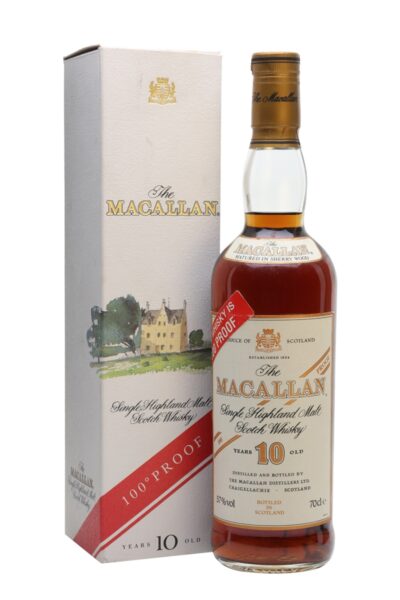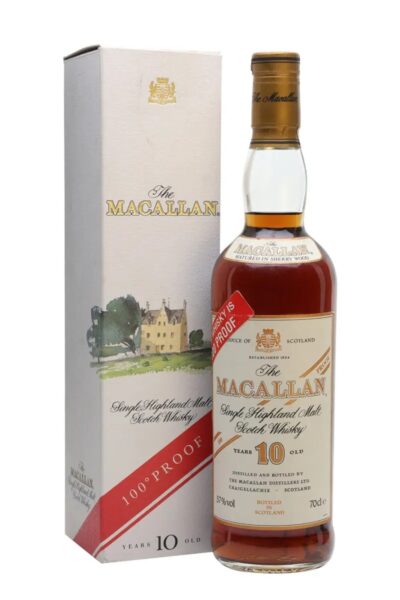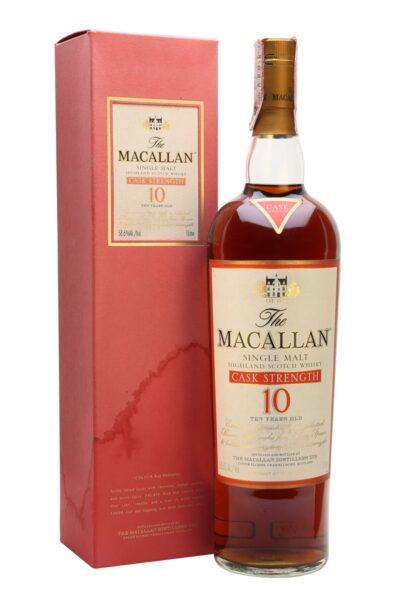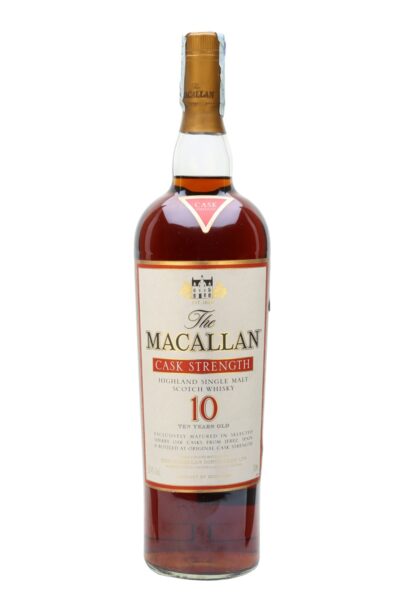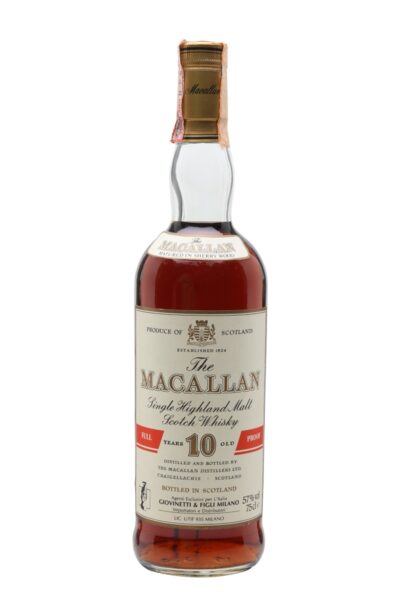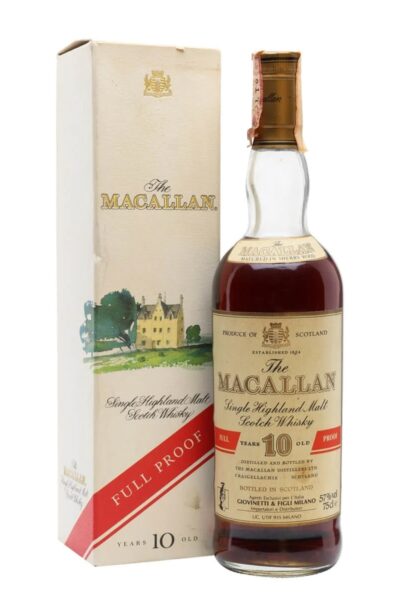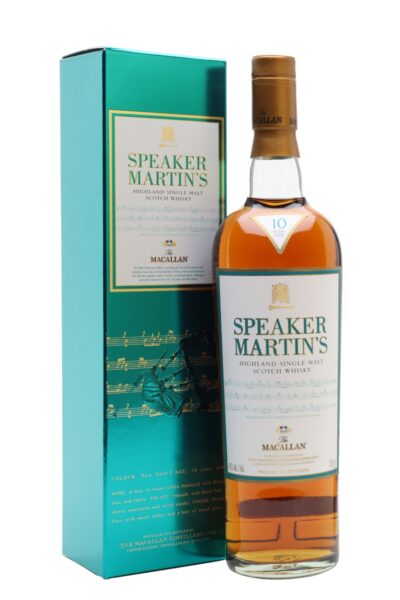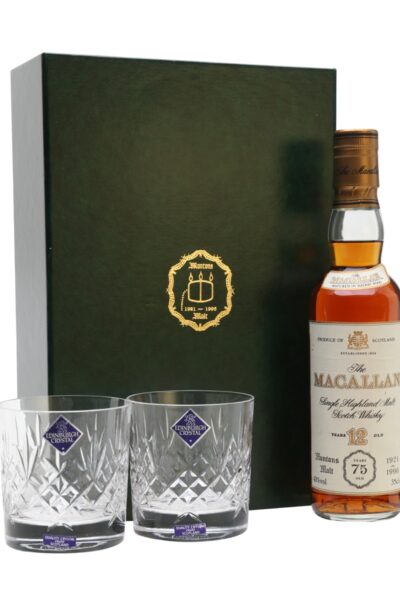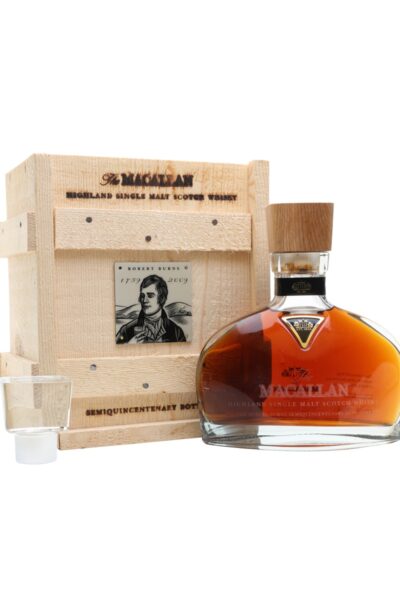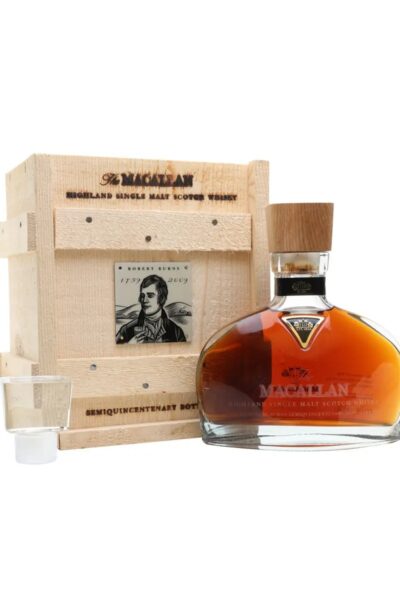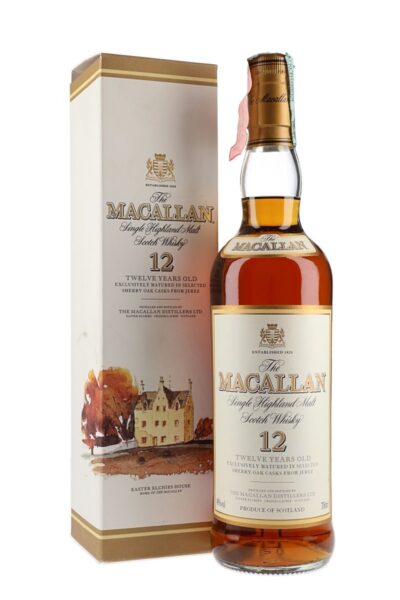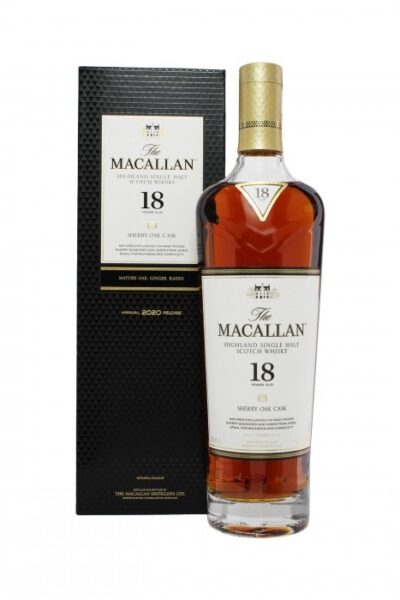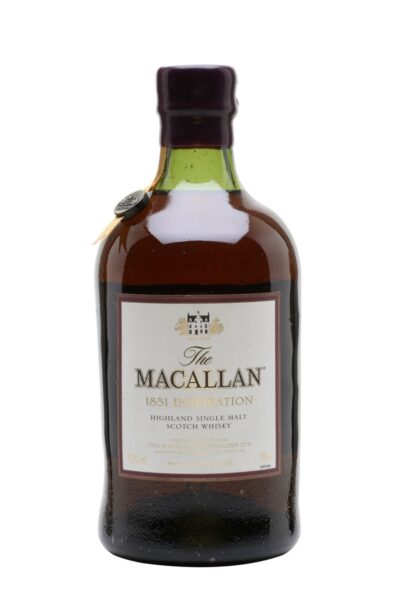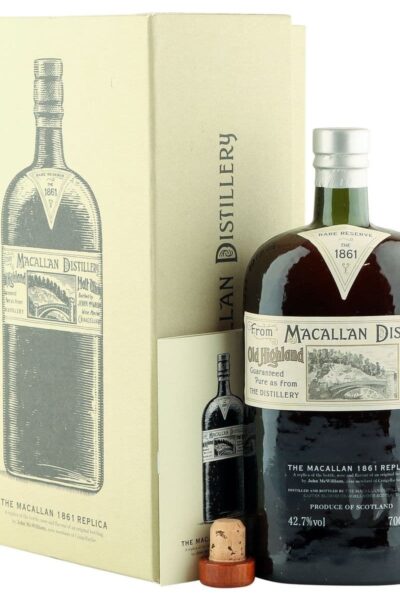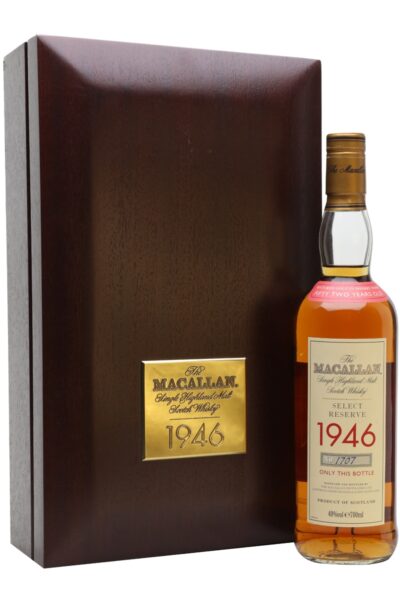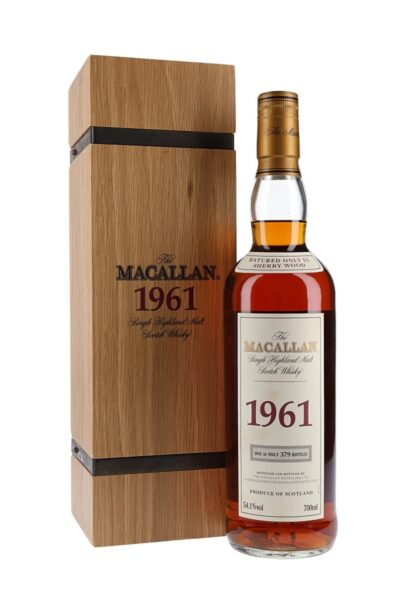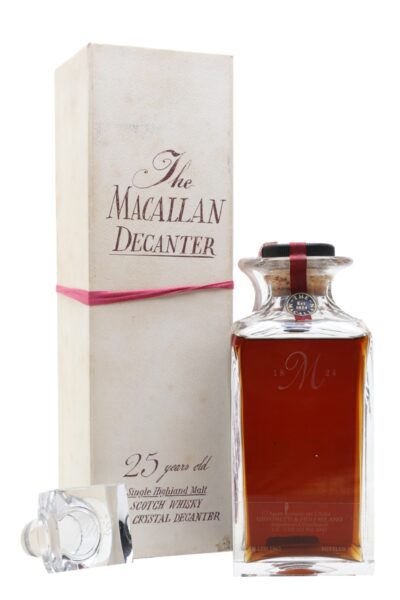The Macallan History
The Macallan Distillery was opened in 1824 by barley-farmer Alexander Reid. In 1892, Roderick Kemp took over the distillery and proved to be the defining contributor to Macallan’s success. He imported Spanish oak for casks and implemented a marketing scheme that rocketed Macallan into the public’s eye.
That reputation lasts even today where a bottle of The Macallan 1926 sold for over a million dollars.
The Macallan Production
Because of the tight regulations listed above, scotch production follows the same pattern at every distillery. However, each distiller makes slight changes and adjustments in the process and technique to create their own unique Scotch. So what changes does The Macallan make to create such a benchmark dram? Let’s look at each of the processes and find out.
The Malting
Malting is the process of preparing the barley for distillation. In order to develop stronger flavors, the barley is germinated, then dried overheat and combined with water to create “wort” and allow early conversion of sugars into alcohol.
What does Macallan do differently?
The Macallan uses a specific type of barley called Minstrel that is exclusive to their distillery. There are 95 acres of this barley grown on the distillery estate itself. And several local farmers also contract with the distillery to grow their unique barley.
Fermenting
Fermenting is the process of converting sugars in the barley into alcohol. While barley has natural enzymes that begin the process in step 1, yeast is added in the fermentation step to increase the speed and quantity of the alcohol produced. This new mixture is called “wash.”
Distilling
Distillation is a two-step process that purifies the alcohol into something we can drink. The “wash” is basically a mixture of yeast, barley, water, sugar, and alcohol. The first distillation called in copper pot stills, separates all the liquid alcohol from this mixture by adjusting heating and cooling levels in the pot.
The product of the copper pot still is a low alcohol, impure “low-wine,” which proceeds to part two of the distillation.
Part two of the distillation occurs in a spirit still, which further purifies and raises the alcohol level of the soon-to-be-scotch. The alcohol purifies in sections, cut by the distiller. The first portion of the alcohol to evaporate, the “head,” is typically too impure to be used. The final portion, the “tail,” lacks flavor. The middle portion, the “heart,” is what goes on to maturation. Where the head, heart, and tail are cut during the process is up to the master distiller.
What does Macallan do differently?

The Mac uses much smaller stills than the average size at most distilleries. While at first this might seem limiting, it actually produces much more concentrated low-wine. The smaller batches are easier to control, so the master distiller has a much easier time being precise in their measurements and cuts. Smaller batches also means greater interaction with the copper of the pot stills, which adds greater flavor.
The famous Macallan stills make an appearance on Scottish Bank Notes.
Maturing
Maturation is the process of aging the scotch in oak barrels. This is where most of the flavor and color develops. The “heart” of the distillate is poured into massive oak barrels and left to age at low temperatures for at least 3 years, often much longer.
What does Macallan do differently?
The real beauty of The Macallan shines through in their expert maturation techniques. And it might be what the distillery is best known for!
In 1892, Kemp imported Spanish oak to make specialty barrels onsite. And it’s these specifically seasoned barrels that give Mac so much deliciously unique flavor. Even today the Spanish oak is handpicked and imported to the distillery. There they cut, shape, and fire the barrels. Most casks are seasoned with spicy sherry which imparts all that spice and fruit into the maturing scotch.
But a few barrels are seasoned differently or not seasoned at all to really focus on the flavor of the oak wood.
The Mac has their own cooperage on site for the creation and maintenance of their barrels. And they are the only distillery to employ a Master of Wood at all times.
The Mac also does not use any caramel coloring in their scotch. All color in the bottle comes exclusively from aging in their specialty oak barrels!
The Taste Test: The Macallan 12 vs The Macallan 18

Now for the part, you’ve been waiting for! What really is the difference between the classic Macallan 12 and the pricey Macallan 18.
There are multiple versions of The Macallan 12, but for the purposes of this taste test, I used The Macallan 12 Sherry Cask (ABV 40%) and The Macallan 18 Sherry Cask (ABV 43%) for consistency. These are the common options in most liquor stores.
Macallan 12 Eye
Deep Gold Amber with Burnt Orange Tint
Macallan 12 Nose
Cinnamon, Baking Spices, Christmas Cake filled with Oranges and Ginger, Vanilla Cream, Oak
Macallan 12 Nose with Water
Sweeter, Toastier, A Bit more Nut and Milk Chocolate, Nutmeg and Cinnamon are still present
Macallan 12 Palate
Simultaneous Rich Sweet Vanilla, Caramel Cream, and Hot Chili, Cinnamon and Ginger Spice. Something Savory like Rosemary and Salt, A Milk Chocolate Hint.
Macallan 12 Palate with Water
Rich, Silk Caramel, Hot Cinnamon doesn’t hit until the back palate. Dried Apricots and Vanilla.
Macallan 12 Finish
Long Oaky Finish with hints of Salted Caramel and Vanilla
Macallan 18 Eye
Deep Red Amber, A Lightly-Stained Mahogany Desk

Macallan 18 Nose
A mix of Dried Berries with Peppery Raspberry and Plum Preserves, Unavoidable Thick Oak, A hint Cinnamon French Toast perhaps?
Macallan 18 Nose with Water
Fruitier, Ripe Fresh Strawberries, Hint of Candied Ginger and Vanilla Ice Cream, Toasty Wheat
Macallan 18 Palate
Smooth, So Smooth, No Alcohol Burn (Is this even alcoholic?). Strong Oak and Leather, Hints of Plums, Raspberries, and Cherries, Bit of Milk Chocolate, Orange Studded with Cloves
Macallan 18 Palate with Water
Even Smoother, but interestingly Fewer Flavor Notes. Oak, Sherry Spice, a Bit of Fruit
Macallan 18 Finish
Long and Leathery, Hints of Tobacco, Dried Apricots and Ginger, Oak is the final note.
The Luxury Scotch: Macallan 18
If you are looking for a luxury scotch we DEFINITELY recommend the Macallan 18. It truly is a must-try pick that you’ll want to keep enjoying from the first sip to the very last drop! Full-bodied and flavourful with a long balanced finish. Worth every penny!
Find it now!
If you’re looking for more than the basic Sherry Oak, try selections from their Double Oak or Triple Oak Varieties. You can learn more about the differences in these maturation options in our Macallan 12 Year Review where I taste test Macallan 12 across all three!
Frequently Asked Questions
What is Single Malt Scotch?
Single Malt Scotch is a further designation under the “scotch” category. All the above rules for scotch apply. But the “single malt” specifies the type.
Single, in this case, refers to a single distillery. It does not refer to a single barrel or bottle. Distilleries blend multiple barrels together to create a bottle.
Malt, in this case, refers to malted barley as the only base grain.
So a “single malt scotch” simply means a whisky:
– Made entirely in Scotland
– Made only of malted barley and water
– Aged at least 3 years
– Includes scotch from only one distillery
What do the Ages mean on bottles of Scotch?
The age on any bottle of scotch refers to the age of the youngest whisky included. So a bottle of Macallan 12 means that the youngest whisky in the bottle-aged 12 years in oak barrels. But there may be much older whisky included in the blend! (So a bottle of Macallan 12 could potentially even have some Macallan 18 mixed in there.)
This distinction is a method of quality control and means you know exactly what you’re getting any time you buy a bottle.
Why is The Macallan so expensive?
Obviously the reputation as a “luxury” scotch has something to do with it. If you create a well-known premium product, you can charge more. People are partially paying for the brand. But in the case of The Macallan, it’s justified. The Master Distiller and Master of Wood use incredibly remarkable skill to create the complex flavors you find in Macallan. (Just think how much importing all that Spanish oak must cost them!) The reputation is well deserved!
How do I serve The Macallan?
Like most scotch, The Mac can be served neat (room temperature, plain) or on the rocks (with ice).
As a personal favor to me and your bank account, don’t use more than one or two ice cubes at a time. You’ll dilute the flavor so much the taste won’t be worth it!
Why is it called “The” whiskey?
Adding “The” to the title of single malt scotch is a marketing ploy first used by The Glenlivet to avoid other distilleries ripping off their name. It’s now become common for some of the most popular distilleries, including The Macallan.
Conclusion
So, which is your choice? In all likelihood, it will come down to price. The Macallan 12 is a remarkable bottle (whether Sherry Oaked, Double Oaked, or Triple Oaked). It’s full of subtle complexity and rich sweet flavor offset by a perfect level of spice. The Macallan 18 is distinctly smoother, richer, and full of even more unique leathery flavors. But the price may be a sticking point. It certainly is for me. Back when it was only $150, I could imagine investing in a bottle for special occasions. But now that it’s gone up to over $200…I’d rather get my Macallan fix with the 12 year!
If you’re looking for a good bottle of luxury scotch without taking out a loan, don’t be above the Macallan 12! And if you feel like making an investment, the 18 will definitely impress.
Do I Recommend Macallan 12?
Macallan 12 is a Single Malt Scotch that has been aged for 12 years in oak. It’s full of rich caramel, vanilla, and hot spice notes. A GREAT luxury scotch that you can get at a surprisingly good price

